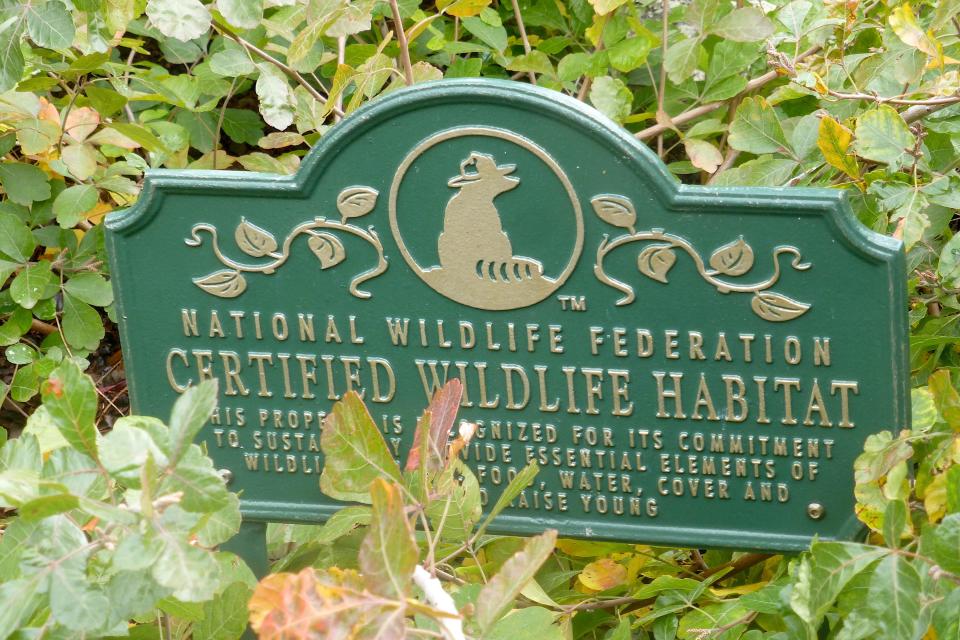Gardening for You: Certify your garden as a wildlife habitat
January gives us all a new beginning. For gardeners who have resolved to do more for their wildlife in 2023, there may be an incentive.
Gardeners who make their gardens or landscapes more sustainable and more wildlife friendly can have their gardens officially certified. There are several programs that certify wildlife habitat gardens if they meet certain criteria.

The National Wildlife Federation’s Certified Wildlife Habitat program is the national program of the official Certified Wildlife Habitat®. Texas gardeners can be doubly recognized if they are also certified in The Best of Texas Backyard Habitat program, a joint effort of the Texas Parks and Wildlife Department and the National Wildlife Federation.
Gardeners certified in either or both programs can purchase official garden recognition plaques like the one in the accompanying photo. The ornate plaque in the photo is in the extraordinary, certified garden of my nephew.
Wildlife-friendly gardens are those that provide food, water and cover for wildlife, and use sustainable practices. To qualify for the Best of Texas Backyard Habitat Certification these conditions must be met (tpwd.state.tx.us):
• An obvious native plant habitat that has a majority of native plants. No more than two plants can be an invasive exotic species.
• Food must be available year-round from a variety of sources: berries, seed plants, tree fruit, and feeders when natural food is not available from plants.
• Water must be provided in a way that is useable and reliable. Water should be kept fresh, for example in a birdbath, pond, or water garden.
• You must be participating in at least six of the following resource conservation measures:
o Establishing a rain garden or buffer to filter storm water
o Using drip soaker hose instead of sprinkler
o Xeriscape plantings
o Irrigating sparingly and only in early mornings or evenings
o Planting deciduous trees along the southern exposure of the house
o Eliminating chemical use
o Capturing roof rainwater
o Mulching
o Reducing or eliminating lawn areas
o Removing invasive exotics
o Keeping your cat indoors
o Composting yard and food waste
The official Certified Wildlife Habitat® has similar requirements as those above, namely, providing food, water, cover for wildlife, and a place to rear young. Large space is not a requirement; cover can be provided with roosting boxes or large trees, while places to raise young can be as simple as nesting boxes. Gardens can be established on balconies, patios, or expansive landscapes.
To start the registration process for certification in the Habitat® program go to nwf.org.
Ellen Peffley taught horticulture at the college level for 28 years, 25 of those at Texas Tech, during which time she developed two onion varieties. She is now the sole proprietor of From the Garden, a market garden farmette. You can email her at gardens@suddenlink.net
This article originally appeared on Lubbock Avalanche-Journal: Gardening for You: Certify your garden as a wildlife habitat

